 ECRANPAPIER
ECRANPAPIEREDITER project presentation news



On Monday, a brief introduction session was organized for FGA students with an assistant and a student from ESAD. During this session, the assistant showcased a concise presentation on the tools that students will be utilizing in the upcoming days. The presentation, enriched with practical examples, offered students a glimpse into the vast possibilities that could be linked with the project's objectives.
Students were provided with a small brochure containing key points and notes to facilitate a smoother navigation through the coding. Additionally, they received a pre-prepared template designed as a foundational base for experimenting with various modification possibilities, including designing and developing visual content. This experimentation encompassed changes in color, background, margins, positioning of photographs, font adjustments, and similar tasks.
Each student worked individually, using materials they had prepared prior to the workshop. These materials consisted of a large amount of text from various categories and types, along with images. Each student chose a different theme for this task. It was observed that during the process of experimentation and playing with design possibilities, students found themselves in need of inspiration. To address this, the proximity of a library was used, allowing students to select books that could serve as a source of inspiration. The criteria for selecting books were based on their appeal in terms of appearance and graphic design, or the connection of the books’ themes to the students' material. Each student selected several books, which was followed by a brief discussion. During this discussion, each student presented their chosen books and explained the books' qualities that they found inspiring for continuing their work.
The day concluded with a presentation by a professor from ESAD in the presentation hall. This presentation provided insights into the project idea, ultimate goals, and a work plan. It also included information on the basics of programming languages, which was particularly useful for FGA students for the activities planned in the following days.
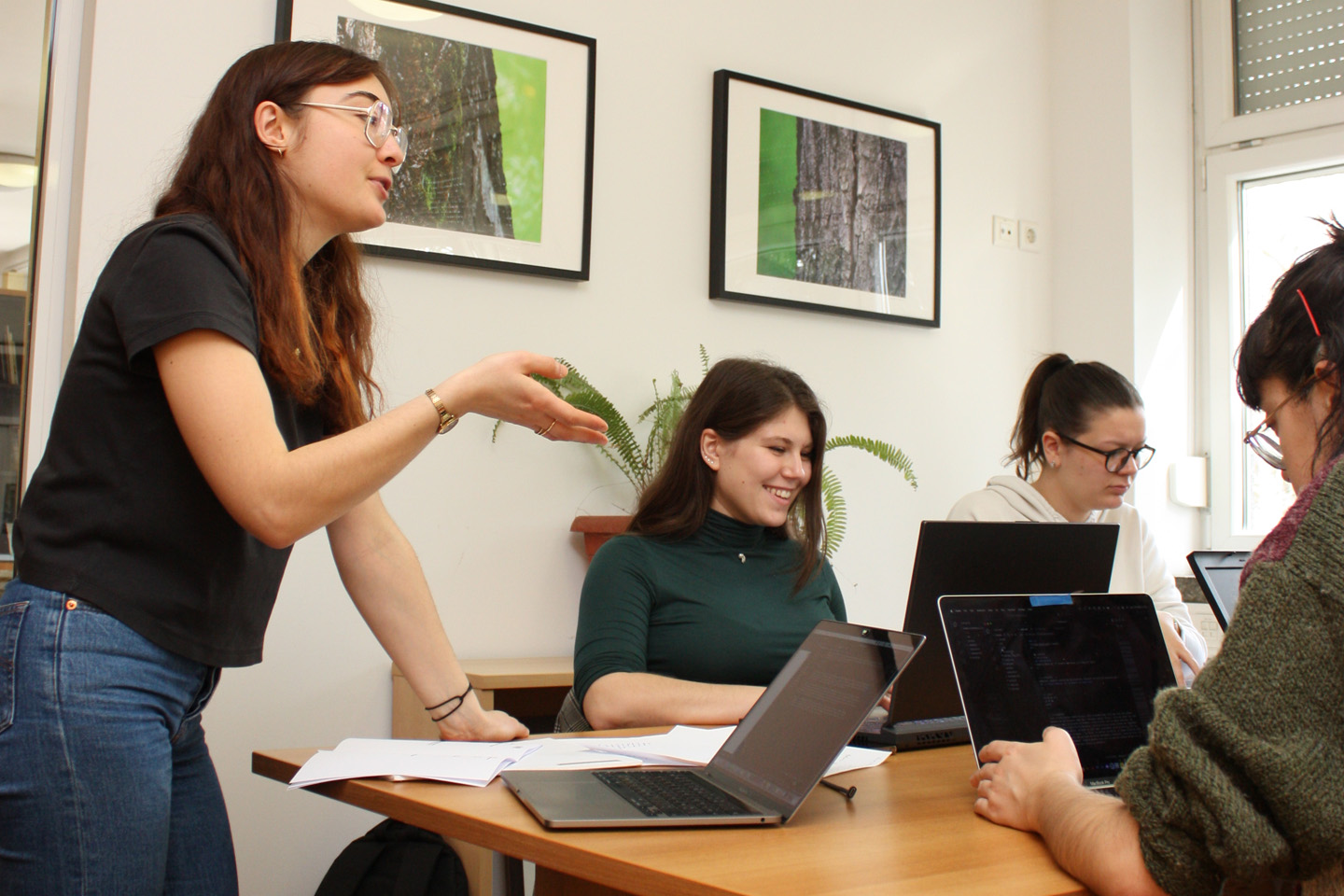
Tuesday began with a visit from the dean prof. Klaudio Pap, who offered a warm welcome to the the project team. The entire group of students was gathered, providing an opportunity for mutual introductions. This introduction session was conducted in a manner where each student presented their design works. Additionally, the theme and specific characteristics of the content prepared as materials for the booklet being designed in the workshop were described. This allowed the French students to gain insight into all the topics selected by Croatian students and to prepare for forming pairs.
Students paired up. Each pair consisted of one FGA student and one ESAD student. The students assessed by themselves who could best fit together. This was followed by a discussion on the various possibilities for developing different booklet solutions. These discussions did not solely focus on graphic design but also on message presentation with a critical view of the theme, considering both digital and print media aspects.
Further considerations included limitations related to printing capabilities, paper formats, paper types, and the number of colors available.
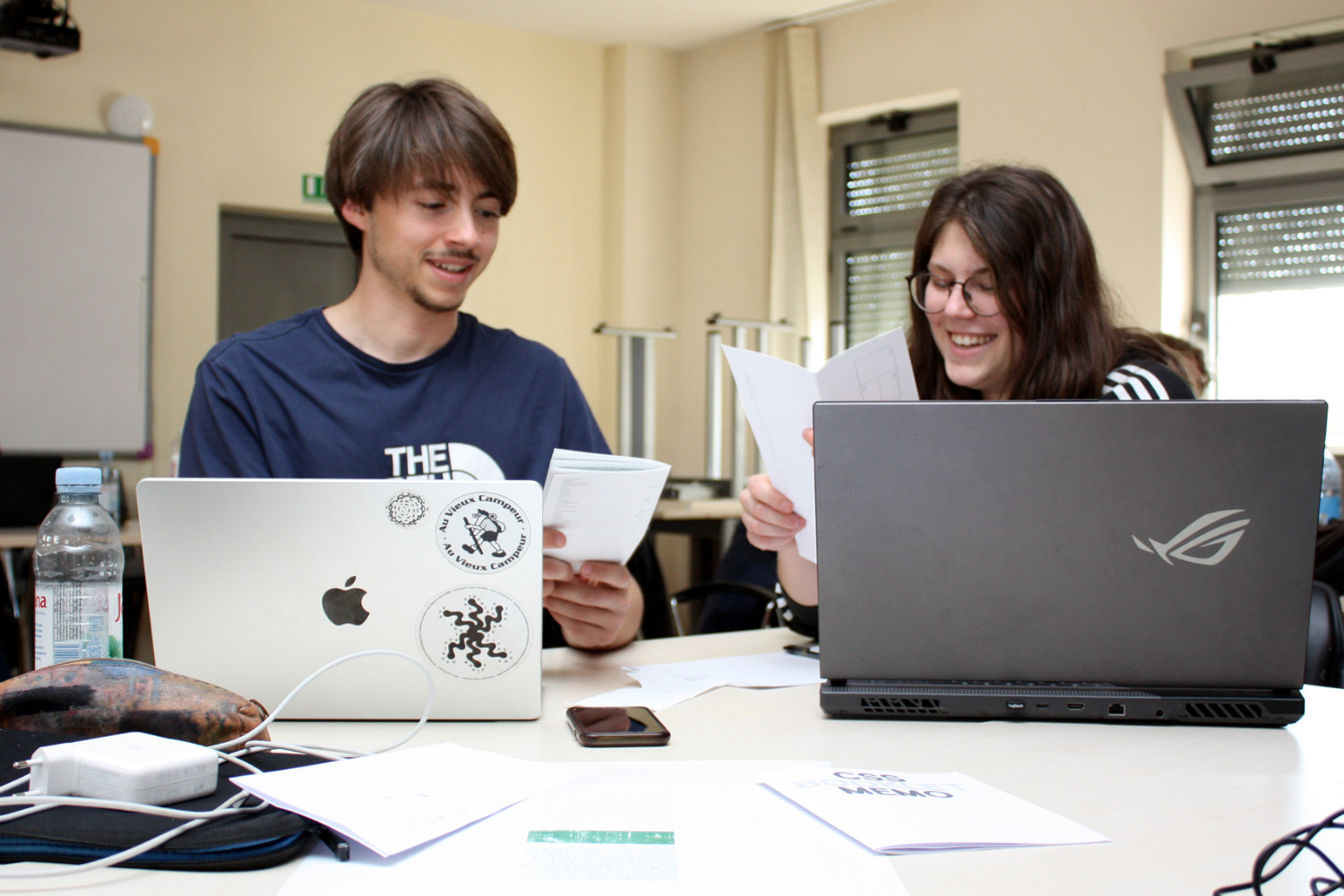
On Wednesday, students continued their work in the previously established pairs. The first prints of the booklets were produced, revealing some flaws in the prepress. Particularly, students had overlooked the inclusion of crop marks and bleed. Additionally, variations in margins were observed, along with a recognized need for printing test proofs of monochrome photographs to achieve an optimal tonal range in reproduction.
This led to a phase of reflection, focusing on developing additional ideas that could technically be realized through programming. The day concluded with a brief presentation by each pair, aiming to show the results of their collaborative efforts. Special emphasis was placed on the challenges they encountered, unexpected aspects of their work, and their planned next steps for the following day.
The afternoon was spent outdoors, in the center of Zagreb. Beyond its architecture and museums, the city was hosting a special event, the 'Festival of Lights', providing a vibrant backdrop to the students' experiences.
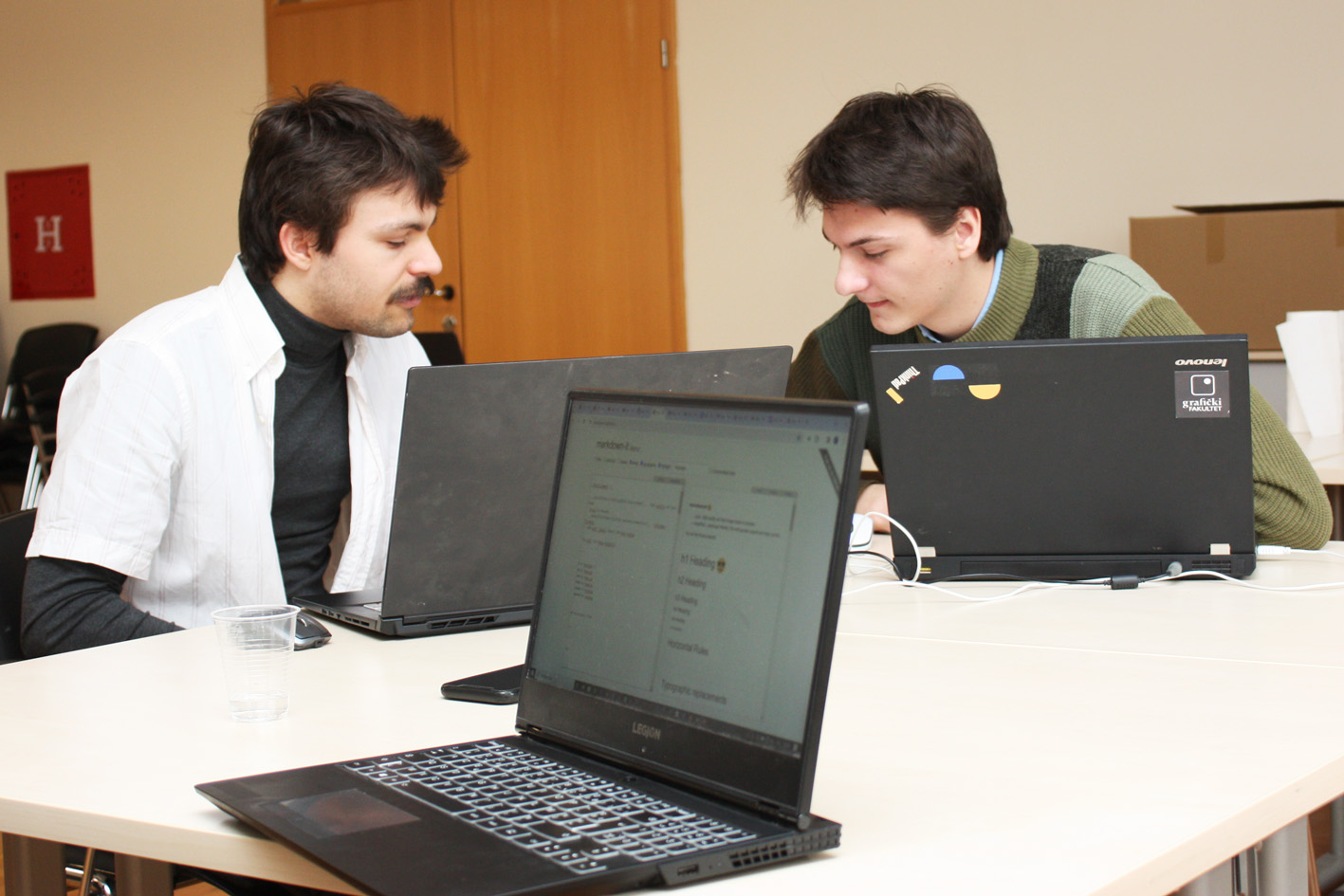
On Thursday, students continued their collaborative work in pairs, consistently engaging in consultations and guidance sessions with assistants and the professor to further develop the booklet design. The significance of the tactile experience offered by the booklet's print version was emphasized by some students, highlighting it as an important aspect that enriches the user's interaction with the printed edition.
Special attention was given to the selection of other materials, considering the type of binding that best conveys the booklet's intended message, as well as the essential tools required for the complete production of the booklet's physical form.
A plan for the final steps to conclude the workshop the following day was defined to achieve a smooth transition into the completion phase.
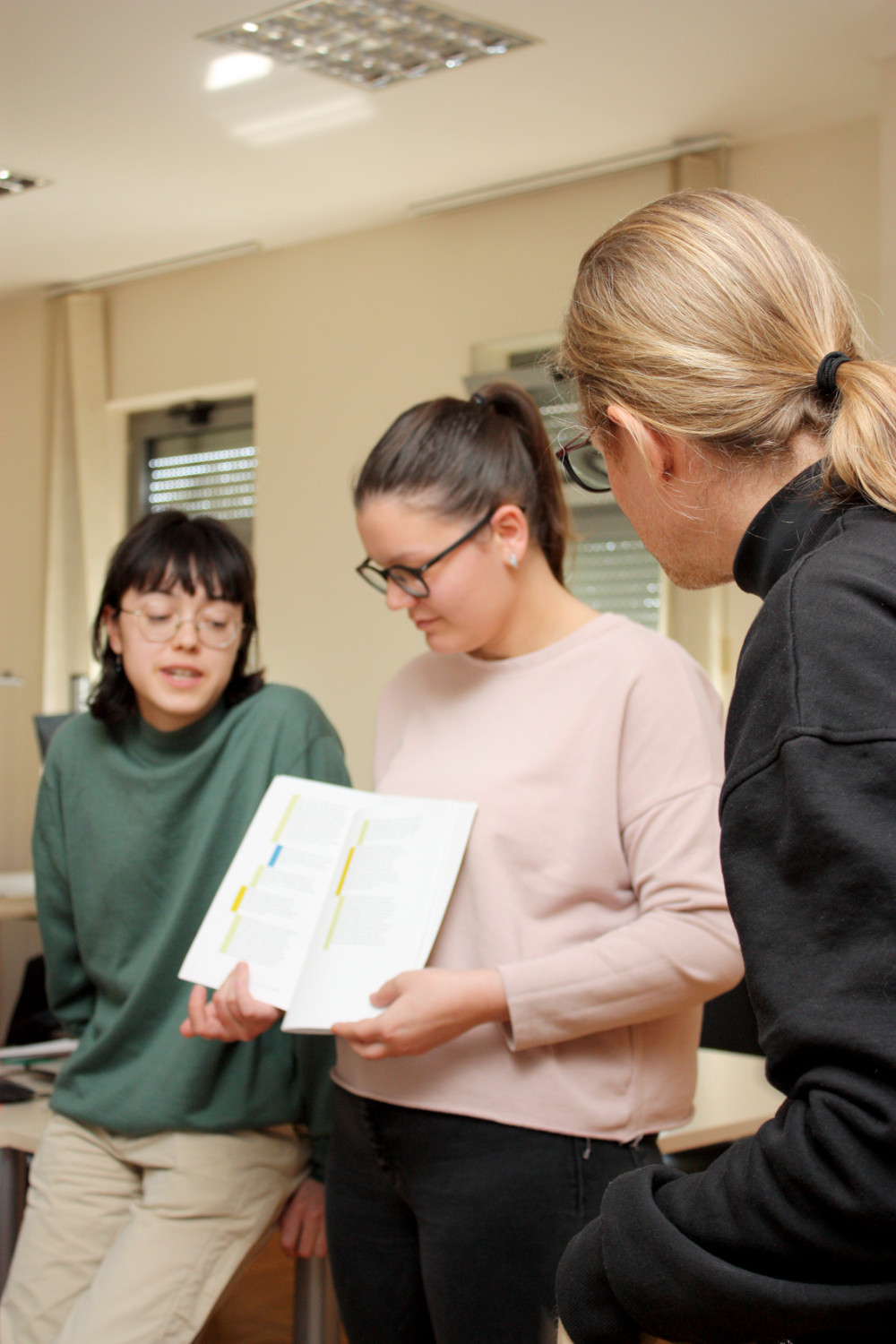
Friday began with a review of the work accomplished so far, followed by individual consultations with each student pair. This led to the printing of the booklets, with corrections being made as needed. The experience in this workshop highlighted the future workshop's need for test prints on plain paper, especially since this workshop faced limitations with the special paper stock intended for certain brochures. Following the printing process, students engaged in folding the printed sheets and cutting them to the correct size. They chose various binding techniques, some more complex than others, so not everyone could finalize their booklet before the start of the student project presentations and exhibition.
The exhibition welcomed staff and students from the Faculty of Graphic Arts (FGA), as well as web developers from outside the university. It kicked off with an introduction by Dominique Cunin, outlining the project's objectives. Then, each pair presented their booklet solution, showing both digital and print versions. After the presentations, visitors explored the exhibition of all the booklets created during the project, starting from the pre-workshop. The interest of the attendees sparked discussions about the student projects, the challenges encountered, and the unique aspects of the project.
The day concluded with discussions about the next steps and planned activities for the project's continuation, ensuring a focused direction for the future.
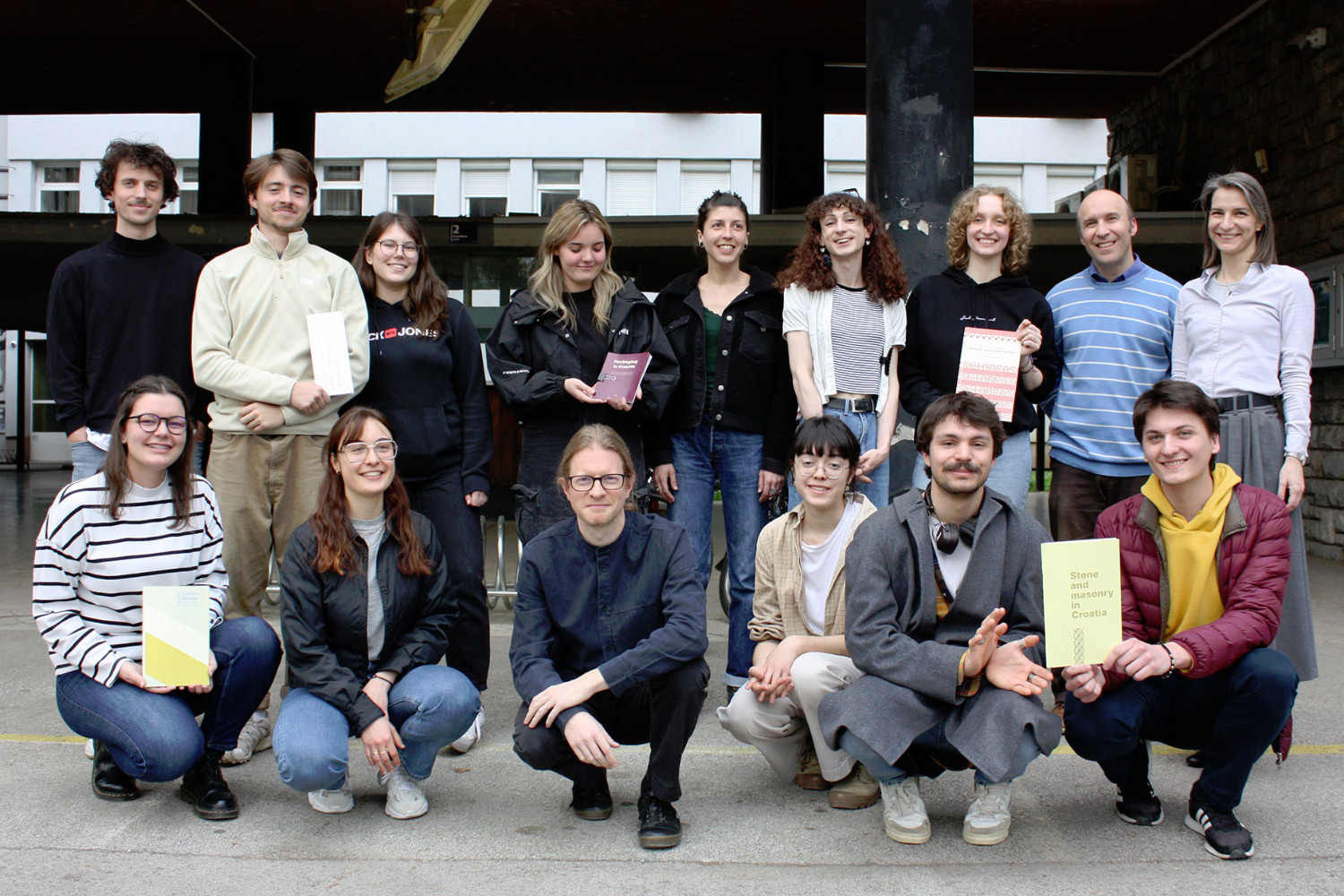
Filip Marjanović and Simon Tregouët designed a brochure on the theme of "Stone and Stonemasonry in Croatia," distinguished by its unique images. They achieved this by replacing the pixels of generated images with pictures of stones. Ema Lovrić and Maissane Escur took on "Packaging in Croatia" for their brochure theme. Their design stood out for its innovative approach to content access. Due to an unconventional binding method, to read a page and view an image (or to "see the product in its packaging"), one needs to cut the page with a knife or scissors. Rebeka Šćulac and Hugo Lopez designed a brochure about the beauties of Croatia, divided into four segments: the Adriatic coast and islands, national parks and nature parks, cities, and gastronomy. Each segment is represented by a different color, offering a glimpse into every aspect on each page. This composition presents the diversity and treasures of Croatian culture. They further explored the possibilities of experimenting with the orientation of text and images, making the brochure readable from multiple angles, evoking the experience of map reading. Katrin Veselinović and Maeva Morinière came up with a design for a brochure themed "Exploring Graphic Design in Croatia," which allows users to interact with the design by highlighting text with a color palette that runs throughout the brochure. Sara Iva Merlić and Thomas Croze focused on traditional Croatian patterns, employing a Japanese binding technique to reflect the connection with traditional hand embroidery and lace-making. The uniqueness of their brochure lies in the typeface which resembles hand-stitched letters and patterns used in weaving traditional fabrics. The most interesting interactive aspect was achieved on pages made of letters that randomly alternate to form a pattern.
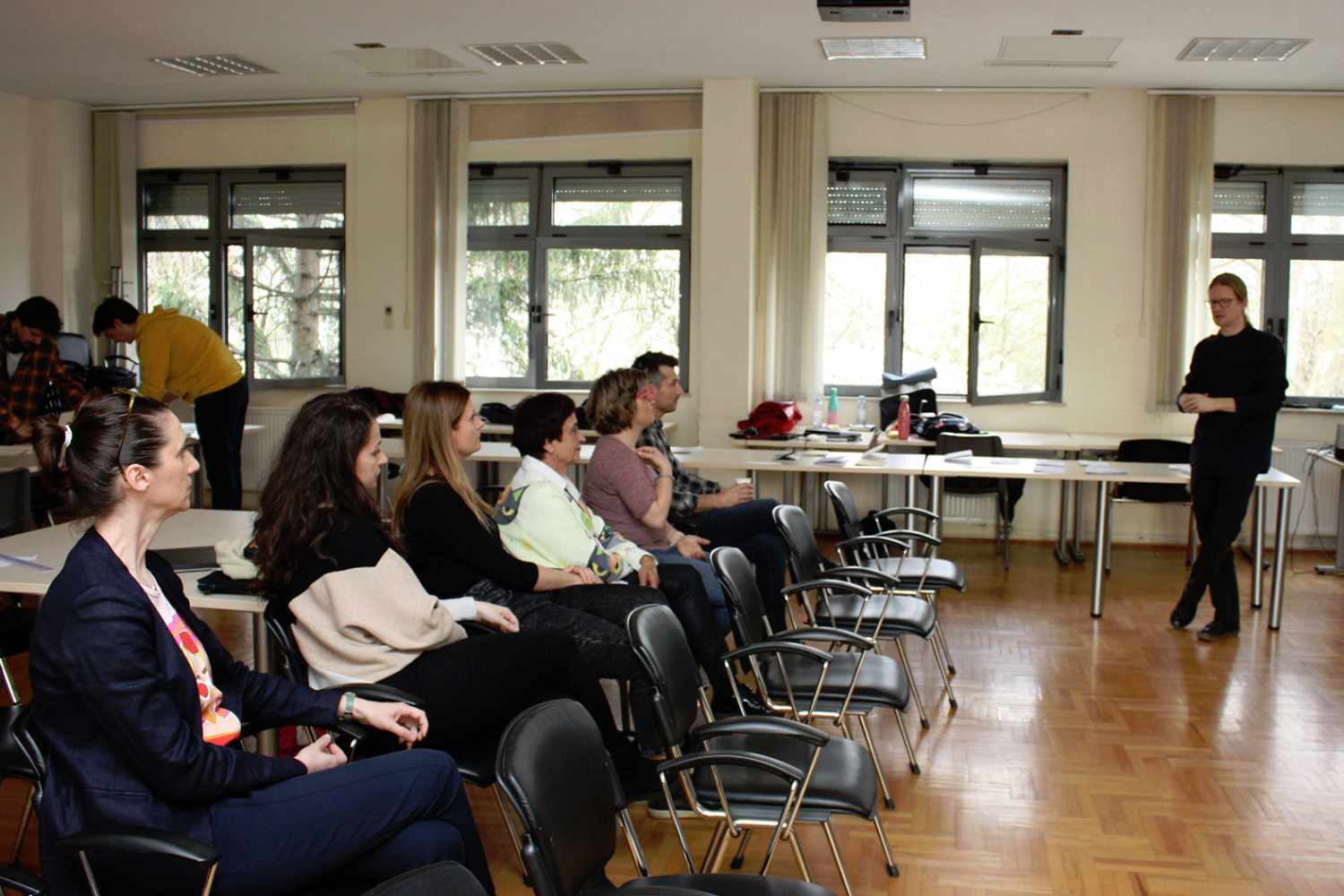
 ECRANPAPIER
ECRANPAPIEREPE — Écran, Papier, Editer is a European cooperation project funded by Creative Europe and supported by Esad-GV. Its aim is to offer technical chains for editorial creation based on Web technologies (Single Source Publishing, WebToPrint, Open Hardware, etc.).
EPE
ECRAN PAPIER EDITER
ÉSAD Valence
Place des Beaux-Arts
26000 Valence
contact@epe.esad-gv.fr
Developed by Cédric Rossignol-Brunet
Designed by Coline Houot and Romain Laurent
At EPE, accessible from epe.esad-gv.fr, one of our main priorities is the privacy of our visitors. This Privacy Policy document contains types of information that is collected and recorded by EPE and how we use it.
If you have additional questions or require more information about our Privacy Policy, do not hesitate to contact us.
EPE follows a standard procedure of using log files. These files log visitors when they visit websites. All hosting companies do this and a part of hosting services’ analytics. The information collected by log files include internet protocol (IP) addresses, browser type, Internet Service Provider (ISP), date and time stamp, referring/exit pages, and possibly the number of clicks. These are not linked to any information that is personally identifiable. The purpose of the information is for analyzing trends, administering the site, tracking users’ movement on the website, and gathering demographic information. Our Privacy Policy was created with the help of the Privacy Policy Generator.
You may consult this list to find the Privacy Policy for each of the advertising partners of EPE.
Third-party ad servers or ad networks uses technologies like cookies, JavaScript, or Web Beacons that are used in their respective advertisements and links that appear on EPE, which are sent directly to users’ browser. They automatically receive your IP address when this occurs. These technologies are used to measure the effectiveness of their advertising campaigns and/or to personalize the advertising content that you see on websites that you visit. Note that EPE has no access to or control over these cookies that are used by third-party advertisers.
EPE’s Privacy Policy does not apply to other advertisers or websites. Thus, we are advising you to consult the respective Privacy Policies of these third-party ad servers for more detailed information. It may include their practices and instructions about how to opt-out of certain options.
You can choose to disable cookies through your individual browser options. To know more detailed information about cookie management with specific web browsers, it can be found at the browsers’ respective websites. What Are Cookies?
Another part of our priority is adding protection for children while using the internet. We encourage parents and guardians to observe, participate in, and/or monitor and guide their online activity.
EPE does not knowingly collect any Personal Identifiable Information from children under the age of 13. If you think that your child provided this kind of information on our website, we strongly encourage you to contact us immediately and we will do our best efforts to promptly remove such information from our records.
This Privacy Policy applies only to our online activities and is valid for visitors to our website with regards to the information that they shared and/or collect in EPE. This policy is not applicable to any information collected offline or via channels other than this website.
By using our website, you hereby consent to our Privacy Policy and agree to its Terms and Conditions.